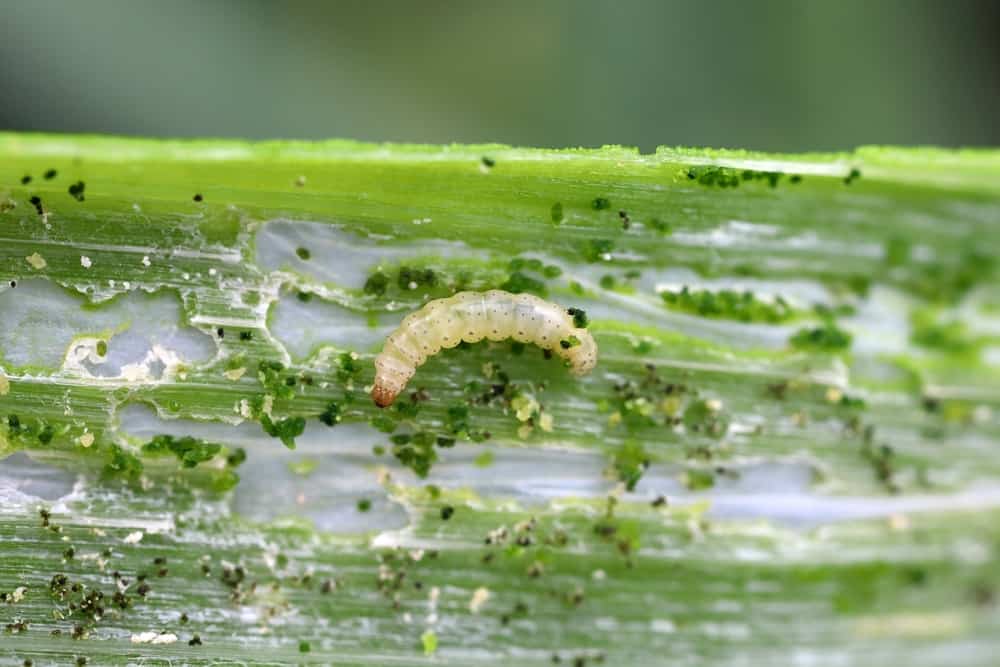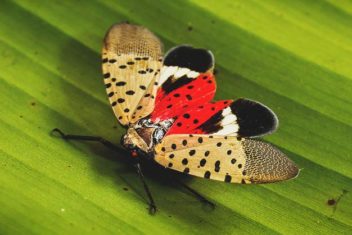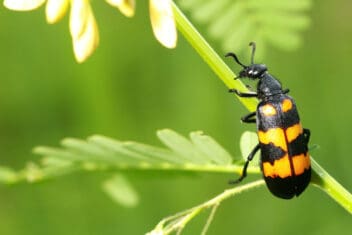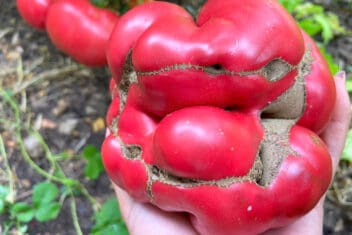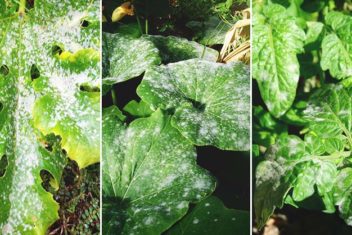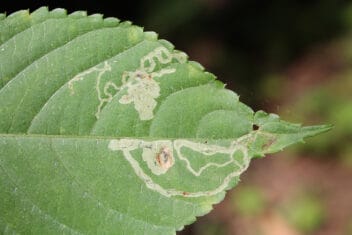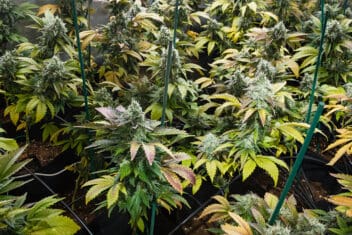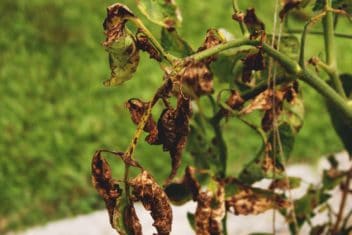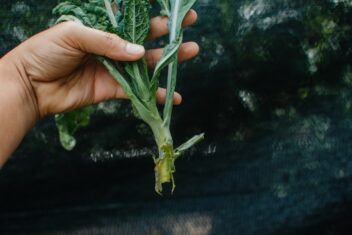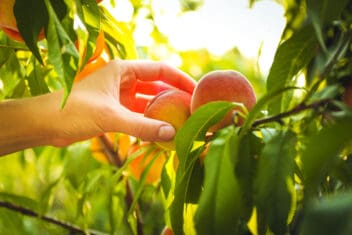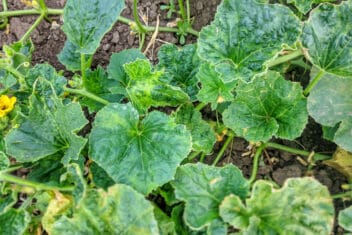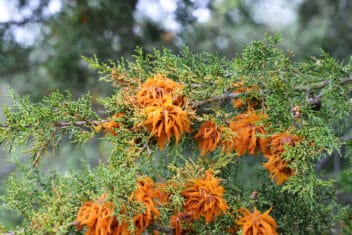Leeks are a cousin of onions and an easy-to-grow, cold-tolerant vegetable. Every now and then though, things go wrong. You find yourself standing there wondering what happened when the last time you looked at your leeks, it all looked fine.
It’s annoying when you suffer leek problems because leeks are expensive if you have to buy them. If you grow them in the garden, they’re an economical crop that can be used in many dishes.
If you have problems growing leeks, or want to learn about them before you plant a crop, let’s talk about it now.
1. Orange Pustules on the Leaves
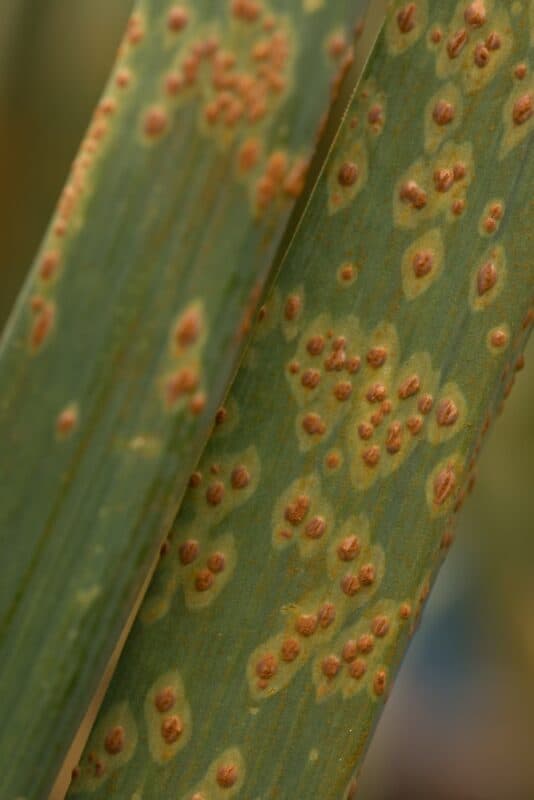
Orange pustules are likely to be the result of leek rust. This is a fungal disease caused by Puccinia porri. It affects other alliums like onions, chives, and garlic. The most common times to see this disease is mid-summer to late fall.
The little orange pustules break open and release spores that spread to other plants. The leaves can curl up, dry, and drop off when the infection is severe. This causes vigor problems.
Be wary of fertilizing leeks too much with nitrogen-rich fertilizers, especially if the soil lacks potassium. Fertilizer can lead to lots of problems growing leeks, so use care to do it right.
Ensure there is sufficient airflow between the leeks. Too much humidity may cause more severe infestations of leek rust.
When you harvest the leek, remove all the foliage from the garden and surrounding area.
There aren’t any chemical controls to fight leek rust, so be sure to rotate crops, clean up any garden debris in the fall, and plant resistant cultivars like ‘Autumn Giant’ and ‘Porbella.’ Remove any symptomatic leaves when you see them.
2. White Papery Strips on the Leaves
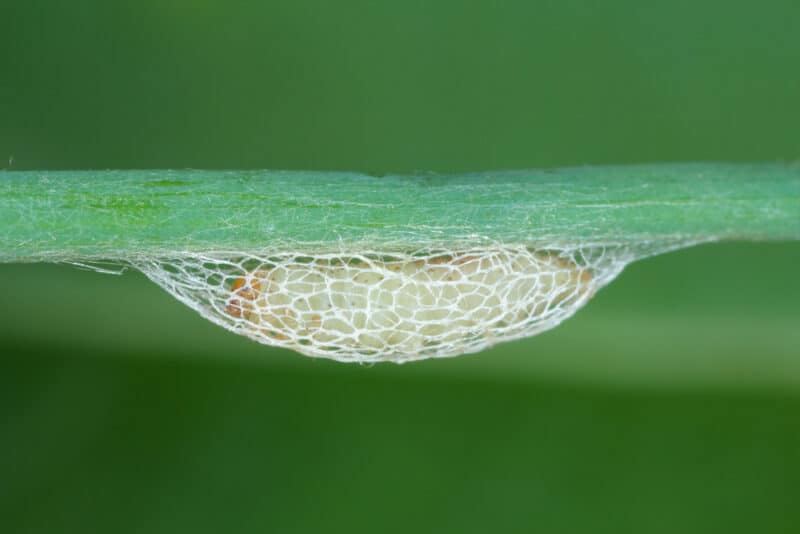
White papery strips on the leaves are usually caused by the leek moth (Acrolepiopsis assectella). Like leek rust, the moth is a pest of all alliums.
The larvae of the leek moth damage the leek foliage. The larvae eat the foliage from the inside, causing a “window pane” or papery effect.
The leak moth caterpillar is white with tiny legs and brown heads.
The moth generally has three generations per season before overwintering as adults or pupae. They emerge and start to fly again around April.
The best method for keeping these pests away is to use row covers and a spray containing Bacillus thuringiensis. It can be tempting when you have problems growing leeks, but don’t use a broad-spectrum insecticide because this harms beneficial insects.
3. Small White Spots in a Linear Pattern on the Foliage
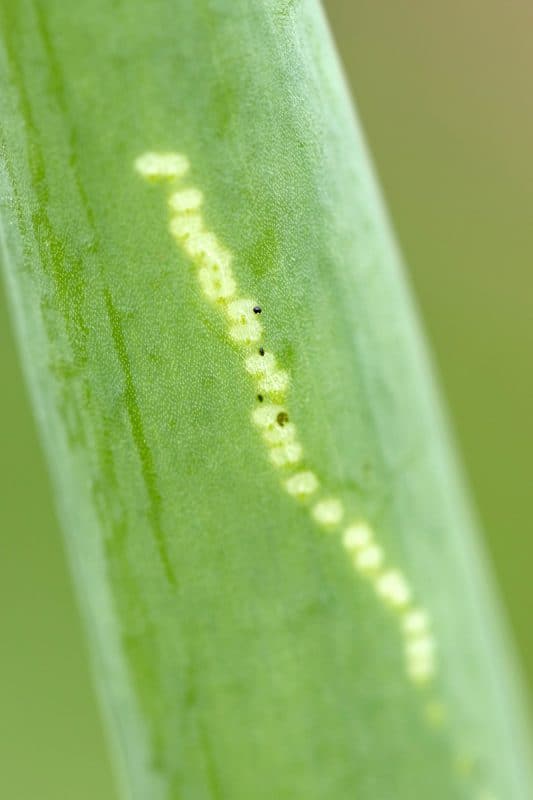
This is the work of the allium leaf miner (Phytomyza gumnostoma). It’s more of a threat to home gardeners since we don’t use regular sprays of strong pesticides (and that’s not a bad thing).
The adult fly is black or gray with yellow or orange patches on the top of the head. The larvae are cream or white and measure up to a third of an inch in length.
The larvae bore into the bulbs, leaves, and stems of leeks. They tunnel their way through as they feed, leaving the tell-tale sign of white spots in a line on the surface of the plant.
The tunnels are often infected by other bacteria, causing more issues for the leek. It is the secondary infections that often cause the plant to die.
The adults feed on the sap of the plant before laying eggs inside by piercing the surface of the foliage.
The best way to deal with allium leaf miners is through sticky traps. These are available at garden centers or online.
Use row covers to prevent access to the leek plants. Row covers can actually help head off lots of problems growing leeks.
4. Yellowing Leaves With White Mold at the Base
Onion white rot is a serious disease that can affect your leek harvest severely. It is caused by a soil-borne fungus Stromatinia cepivora. Once in the soil, the spores can last up to 15 to 20 years.
You’ll see the leaves turn yellow at first, and then a white mold forms at the base of the leek. In dry weather, the leaves begin to yellow and wilt. In wet weather, the leak becomes loose in the soil as if it’s in a hole too big.
Under the surface, the pathogen attacks the roots and bulb before the white mold forms on the plant at the soil line. Eventually, small black growths called sclerotia form in the mold.
Avoiding this disease is the key. Don’t use contaminated soil, as this is one of the most common ways it is introduced to the home garden. If you bring in soil, make sure it’s from a reputable source that guarantees clean and sterile soil.
It can also be introduced by muddy footwear and garden tools. If you have problems growing leeks, it’s always a smart idea to implement good garden hygiene.
This is a fungal disease you don’t want to get a hold. The key is to notice the older leaves being affected first. This is a good sign it’s onion white rot.
The roots rot quickly, so give the plant a light tug and see if it slips from the ground very easily.
Onion white rot can affect the leek at any point in the season, but in areas like California, the disease usually appears in the middle of the harvest season.
Soil temps between 60º and 65ºF are optimum for onion white rot. If the soil temperature rises above 78ºF, it will inhibit the growth and survivability of the disease.
Another way to avoid onion white rot is to practice crop rotation. Don’t follow an allium crop with another allium crop.
If you end up with this disease in the garden, consider cutting your losses and removing them. Don’t plant alliums in that area for at least two years. Add plenty of well-rotted compost to regenerate the soil and help it repair it.
5. Leaves Die Back From the Tips
The most common sign of pink root is the leaves die back starting at the tip. There is stunted growth, and when you remove the plant from the soil, the roots are light pink, red, or purple. In advanced stages, the roots turn black and die.
Another fungal disease (Phoma terrestris) that attacks alliums, pink root occurs in stressed plants, usually from insufficient moisture or watering.
Crop rotation is critical, along with garden hygiene. Keep tools clean and make sure the soil is well-fed. These are good tips for avoiding most problems growing leeks.
Vigorous plants can withstand pink root, but struggling plants and seedlings generally don’t do well.
6. White Spots With Green Halos on the Leaves
This is a sign of botrytis leaf blight (Botrytis aclada, B. allii, B. porri). It usually appears when humidity is high or there has been extended rain. When it comes to problems growing leeks, fungal issues are often a cause and they thrive in wet weather.
This is caused by a fungus and is more of a problem on older leaves than young ones. Severe attacks will limit vigor or may kill the leek and spread to other plants.
Plant leeks in single rows at least 10 inches apart. This allows for good air circulation and gives the foliage time to dry after rain or watering.
7. Spreading Water-Soaked Lesions With White Centers
Purple blotch (Alternaria porri) starts with water-soaked lesions with white centers. The lesions expand and turn brown or purple. Large lesions may girdle the foliage and cause it to die off.
This is another fungus that favors high humidity and wet environments.
Crop rotation is essential — plant non-alliums for two to three seasons before planting leeks again. Ensure the soil is free-draining and consider regular sprays of a general fungicide such as a copper-based fungicide as prevention.
Water soil, rather than the plant. The leeks should be spaced to enable them to dry out if they get wet. Spacing and watering at the soil level is a smart way to avoid several problems growing leeks.
8. Leaves Turn Gray Before Twisting and Dying
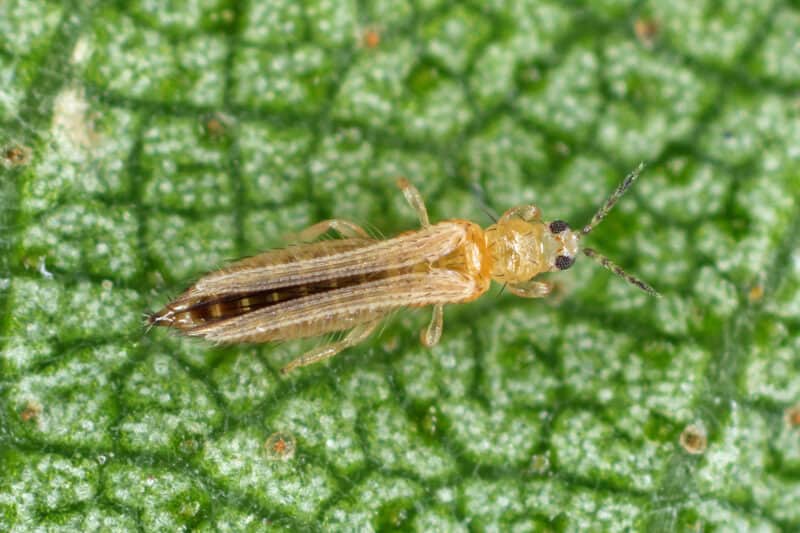
This is a good sign thrips (Thrips tabaci) are enjoying your leeks. They love hot, dry conditions, and weak plants are susceptible.
Thrips infest grain crops in the spring, so avoid planting leeks nearby.
Neem oil is highly effective as a knockdown for dealing with thrips. You can also introduce beneficial nematodes and predatory mites for an extra layer of control.
Thrips can become immune to insecticides quite quickly, so don’t overspray. Only apply neem oil when you know the pests are present and only for a few weeks at a time. If you still have problems growing leeks, look at the overall health of your garden.
9. Yellow Spots Covering the Foliage Except for the Leaf Veins
Downy mildew is a common but severe plant disease. I’ve found leeks to be particularly susceptible and quick to struggle once infected.
Yellow spots appear on the upper leaf surface before spreading rapidly everywhere except on the veins. In a short time, the spots turn brown, preventing photosynthesis. The leaf eventually dies and drops off. If the infection is severe, the leek will die.
It’s common to see mold growing on the underside of the foliage.
Downy mildew can be spread by air or water droplets. The fungus likes cool, wet weather.
If you see symptoms on a leek, remove it and dispose of it in the garbage.
Avoidance is best achieved by good practice. Rotate crops, remove weeds and plant debris, and use fungicides when you see the first sign of the disease.
As you can see, many of these common leek problems can be avoided by good gardening practices such as crop rotation, garden hygiene, and proper spacing. Leeks are a great crop, so give them a go.
